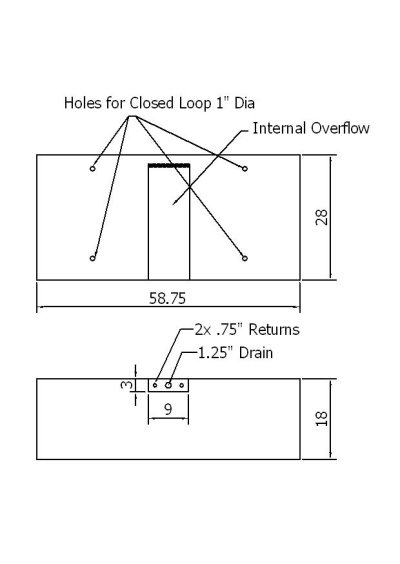Hi All
I need some advice on the design of an internal overflow system for a new reef tank that I am getting custom built
The tank itself is 60"x18"x28" which works out at approx 130 Gallons
I want to push through about 900GPH (any comments on this please feel free)
According to the overflow calculator on reef central that would require an outlet of 1.25" and a linear overflow of 14 inches.
I am thinking about putting in a central overflow system with 1 drilled outlet and 2 drilled returns. (All drill holes will be on the bottom of the tank)
I would greatly appreciate some advice on the best way to have the overflow box constructed including the size of the outlet and return holes. This is holding up tank build as I'm not entirely what to tell the manufacturer as this is my first marine build
Many Thanks in Advance
I need some advice on the design of an internal overflow system for a new reef tank that I am getting custom built
The tank itself is 60"x18"x28" which works out at approx 130 Gallons
I want to push through about 900GPH (any comments on this please feel free)
According to the overflow calculator on reef central that would require an outlet of 1.25" and a linear overflow of 14 inches.
I am thinking about putting in a central overflow system with 1 drilled outlet and 2 drilled returns. (All drill holes will be on the bottom of the tank)
I would greatly appreciate some advice on the best way to have the overflow box constructed including the size of the outlet and return holes. This is holding up tank build as I'm not entirely what to tell the manufacturer as this is my first marine build
Many Thanks in Advance

